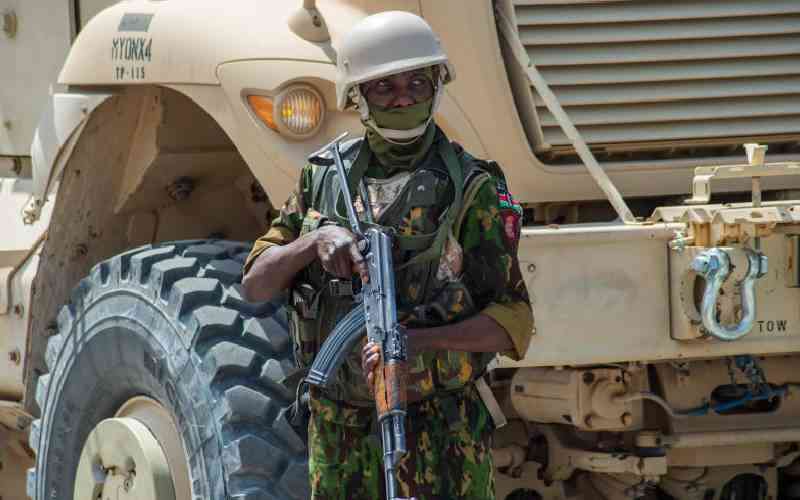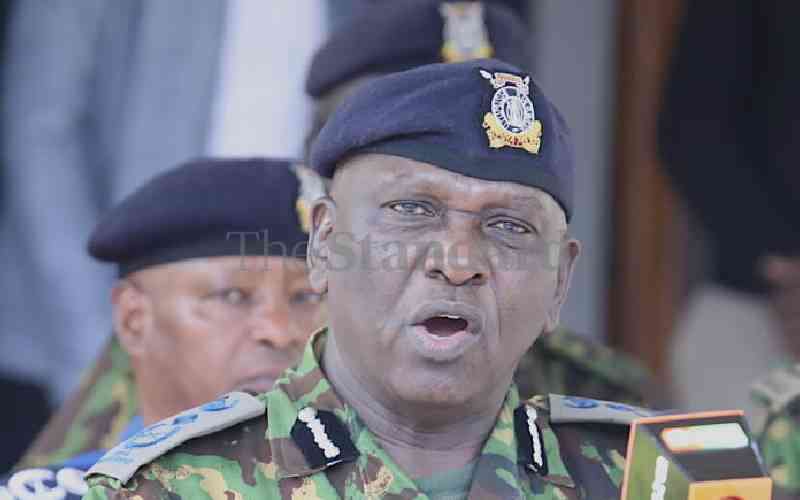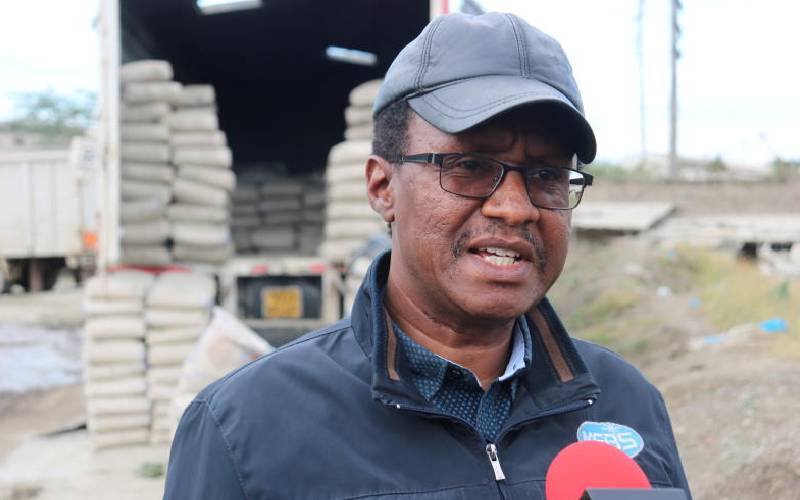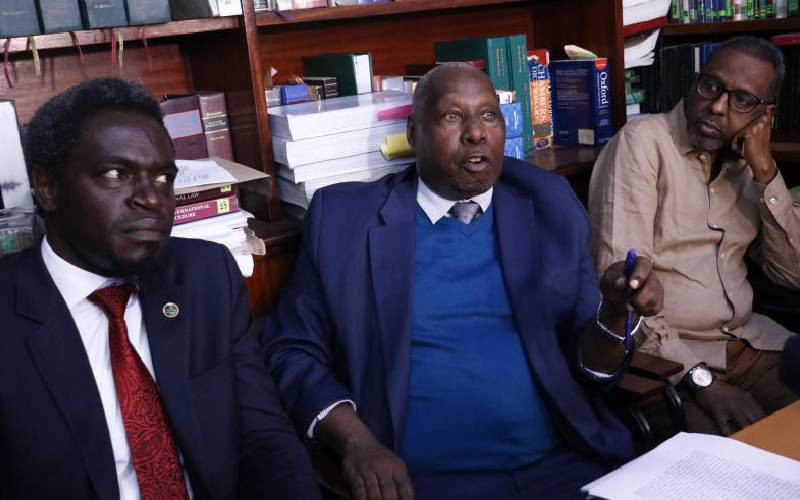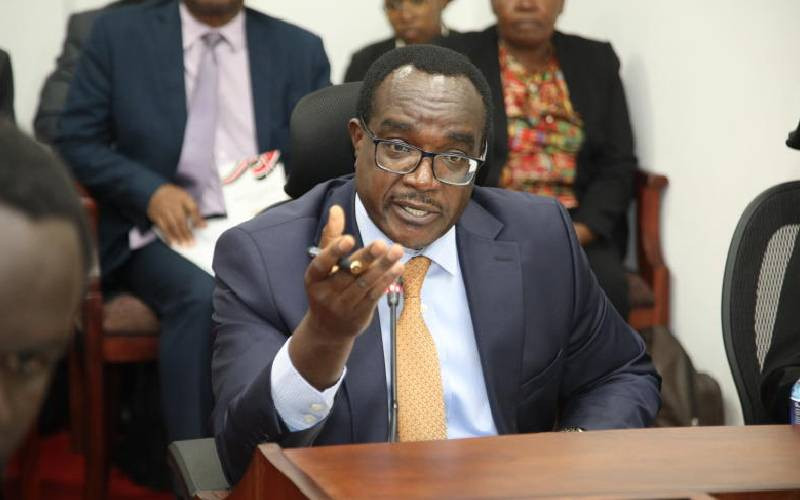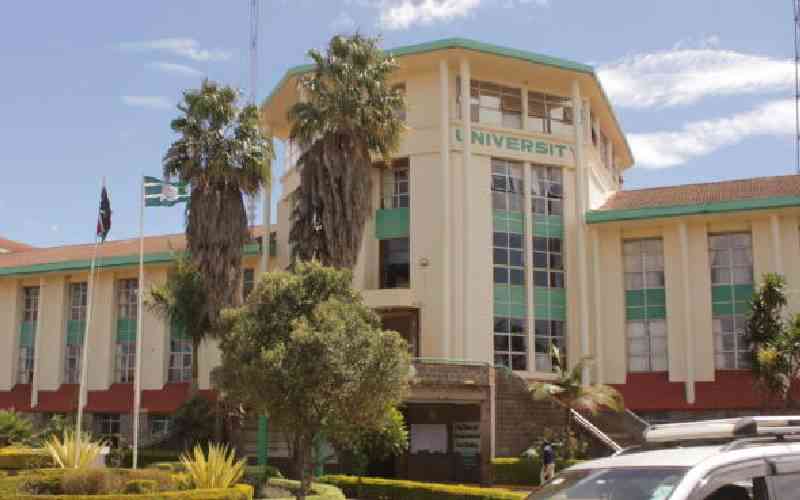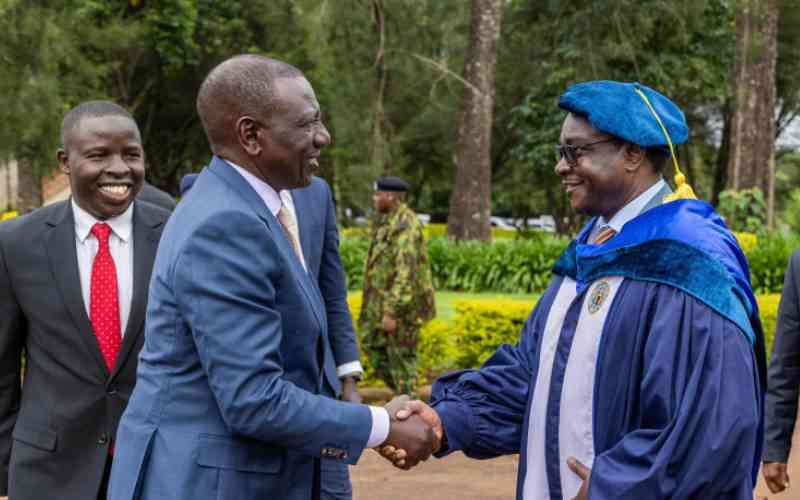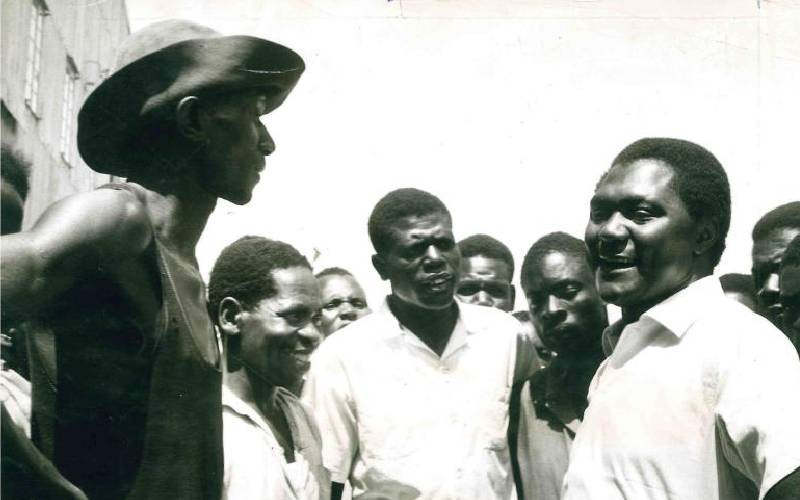
It was Africa's literary giant Chinua Achebe who said in his 1966 novel, A Man of the People, that politics is a dirty game. The book was published at a time Kenya's politics was getting murky and 54 years ago today, on July 5, 1969, two gun shots brought down one of Kenya's founding fathers. Writer ROSA AGUTU recalls the events surrounding the assassination of Tom Mboya, his political persuasions and how his fraternity with the West fueled fear and unease about him in Kenya and Africa.
Men crying uncontrollably flocked the Nairobi Hospital in the afternoon of July 5,1969, after the Minister for Economic Planning and Development was shot dead.
Doctors said the first bullet caught the aorta, causing severe bleeding, while the second hit his shoulder.
A footage shows doctors trying to resuscitate the unresponsive Cabinet minister as his upper body is covered in blood.
Meanwhile, the crowd outside grows by the minute - women crying while holding one other while men wept each on their own.
Thomas Joseph Mboya, aged only 39, had breathed his last.
A few people were allowed to see his body before it was taken to the mortuary. One man can be seen in the video footage holding Mboya's face, crying uncontrollably. It becomes chaotic outside, and police are called to control the crowd.
Who killed Mboya?
In his book The Politics of the Independence of Kenya, Keith Kyle says Mboya had acquired many enemies. Although he had great charm for people he liked, he could be very arrogant towards those he didn't like. Mboya was also vain and was unafraid of displaying it.
Malcom MacDonald, the last governor of the Kenya colony, described Mboya as a man of the first rank by any standards, though he had one awful defect. He had an insufferable arrogance. He offends all sorts of people whom he could otherwise easily have commanded as supporters.
He could command streets and assembly halls, but the number of personal aides who ended up in the ranks of his enemies was daunting.
That Saturday was just like any other busy day for Mboya. That morning, The East African Standard had published his photo taken the previous day at the Embakasi Airport when he arrived from a meeting in Addis Ababa, Ethiopia.
He was supposed to travel to the UK for a conference at the University of Sussex, which was to begin on Monday.
In his book Tom Mboya published in 2021, historian Bethwel Ogot says Mboya knew that there were plans to assassinate him and some of his close friends had attempted to persuade him to travel directly to Britain from Addis Ababa. But Mboya had told them that if some people in Kenya were determined to kill him, a few days in the UK would merely postpone the day of reckoning. He ruled out going to exile.
In the book Tom Mboya;The Man Kenya Wanted To Forget, David Goldsworthy says that afternoon minister went to the Treasury car park and told his driver to go home. He drove himself to Chhani Pharmacy, owned by family friends Mr and Mrs Sehmi Chhani. The shop had already closed for the weekend, but they opened for him.
After buying lotion for dry skin, he stayed at the counter chatting with Mrs Chhani. When he was ready to go, she opened the door. It was now 1:15pm and the streets were busy.
Mboya stepped. Two loud shots rose above the noisy city. The minister fell.
By July 10, the police had found and were testing an unlicensed Smith and Wesson .38 revolver. On July 21, it was announced that the man who shot Mboya was Nahashon Njenga Njoroge.
Goldsworthy says the 31-year-old Njenga was a former member of the Kanu Youth Wing and a former chairman of the Central Ward of Kanu's Nairobi branch. He had spent some years in Bulgaria training as a sapper and mechanic. Since his return, he had tried his hand at various small businesses.
Njenga claimed that he had known Mboya for nine years and regarded him as a friend.
That made many wonder how a man known to Mboya and who he had worked with in party activities turned into his shooter.
Nine witnesses to the shooting failed to identify Njenga in police line-ups, which begged the question; did Njenga really shoot Mboya? Had he been used to cover up for someone?
After his arrest, Njenga asked: "Why do you pick me, why not the big man?"
On September 10, 1969, Njenga was sentenced to death. An appeal at the East African Court of Appeal was rejected. On November 21, sources revealed that Njenga was hanged in secret on November 8.
But in 1970, West Mugirango MP George Justus Morara, while in Lusaka, Zambia where he had travelled with a parliamentary committee, claimed that he saw Njenga at an entertainment joint.
When he came back to Nairobi, the committee led by Kandara MP George Mwicigi brought the matter before Parliament and elected to inform the country what had transpired. Morara opened a Pandora's box. He told the House that he had seen Njenga in Zambia. The Government was given 48 hours to produce the man.
Shockingly, Morara died in a road accident two days later while travelling to Nairobi from Kakamega.
Mboya and the West
History professor, Julius Gathogo, says Mboya was pro-West and not East.
"This could have been because he did not suffer like those in prison suffered. He was given a scholarship at a time when Kenyatta was in prison," he says.
Prof Macharia Munene says Mboya was built and prepared by the British through their programme to give Africa its own leaders
"The British were trying to create leadership for Africans because the existing leadership was bad, the ones associated with the Mau Mau," says Prof Munene. "Many of them were locked up anyway. There was a vacuum of leadership. They needed somebody people will listen to and be acceptable, therefore Mboya came in handy."
The History and international relations scholar says the politician was identified while still a budding trade unionist and was groomed. The colonialists provided him with opportunities to travel to various places and get noticed.
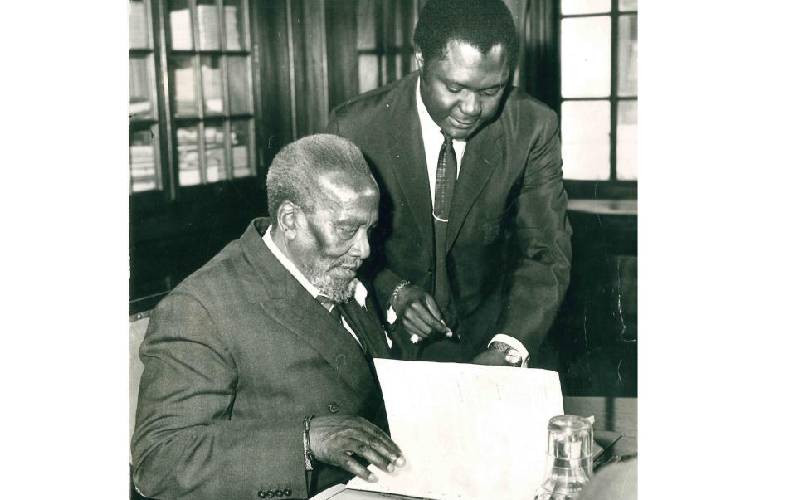
President Jomo Kenyatta and then KANU Sec-gen Tom Mboya during meeting at State House Nairobi in June 1969. [File, Standard]
"As time passed the British decided to give more exposure than simply attending labour conferences so they gave him an opportunity to go to Oxford not to get a degree but to rub shoulders with potential rulers, to be seen, to be with policy makers. He was there boy," says Prof Munene.
Prof. Gathogo says Mboya was a blue eyed boy of the west and that nobody among Kenya's early leaders represented western capitalism than Mboya.
"His interviews with the western Press came as a result of being a trade union leader, he was always sort after by the media because he was a good orator," he says.
But this, Prof Munene argues, should not bury the fact that he worked very hard for Kenya.
In his book, Goldsworthy says Ruskin College, Oxford, where Mboya was sent by the British to "shaped to fit" knew they were receiving an unusual student.
He was in a different position from the average Ruskin students, or even others from the colonies. Mboya was already a general secretary of National Trade Union Federation and was to some extent a celebrity. He differed from most other students too in that he would not be studying for any kind of degree or diploma. This the principal, HD (Bill) Hughes, realised that from the outset Mboya would probably have to be run on a very loose reign. What he got out of Oxford would be up to Mboya himself.
Prof Macharia says Margery Perham, an influential British operator in the colonial circles at Oxford, who had a reputation of identifying and grooming potential African leaders, said Mboya was the right leader for Africans
"She said he was not Kikuyu (meaning not associated with Mau Mau)," says Prof Munene. "He's energetic, brilliant. He wrote a pamphlet about the African perspective of the Mau Mau and Margery forwarded it and became one of the top sellers."
While in England, Mboya requested to go to the US, where the American Committee of African Affairs and the African American Institute waited for him.
"They had been created in 1953 as a reaction to the Mau Mau war, since it was clear that Africa would finally take over, they started preparing and grooming good Africans," says Prof Munene.
The African American Institute was created and funded by the CIA, while American Committee of African Affairs was created by the Liberals.
"These are the people who were looking for American interests beyond 1950s. Trying to shift away from President Eisenhower position that tended to support the British. The Eisenhower administration was in full support of the British operations in Kenya against the Mau Mau, he even got small deals here and there" he says.
Student airlifts
Prof Ogot states that in May, 1959, Mboya returned to the US. He met several American leaders, among them Vice President Richard Nixon, Senator John F Kennedy and Martin Luther King Jr (who was assassinated a year before Mboya at the same age of 39), for his idea of student airlifts. He also appeared on television show "Meet the Press".
Kennedy, who anti-colonialists, was the chairman of the Senate Committee on African Affairs.
Mboya formed a fundraising committee consisting of famous Afro-Americans including Harry Belafonte, Sidney Poitier and Jackie Robinson. The committee raised US$ 35,000.
Prof Munene says Americans believed that once the students cleared their education and went back to Africa, they were likely to be on the American side of the Cold War.
When he returned to Kenya in 1956, he was received with pomp and colour as the leader of Africans not just Kenya. The image was created that Africa now has a new leader. Mboya had the right connections in the labour unions and the CIA.
That is how Mboya got the funds to build the Solidarity Building, which hosts the Central Organisation of Trade Unions headquarters at Gikomba.
"Part of the reason that it was built in Gikomba is that Africans were not allowed on this side Uhuru Highway," says Prof Munene.
He says rivalries emerged between the UK and US over Mboya after the US seemed to grab him for themselves
"The British were not amused. They said he was there boy they created him and Americans came and stole him. One of the Margery Perham's students I met in Boston said Margery was not amused," he says.
The desire to promote Mboya as the leader of Africans also brought problems with other continental leaders like Ghana's president, Kwame Nkrumah.
In 1958, Nkrumah organised an anti-colonial conference where Mboya's star shone and was felt across the colonies.
"Mboya used the opportunity very well to sound like a champion of Pan Africanism, anti-colonialism. He told the colonial officials to scram out of Africa the way they had scrambled into it. It boosted his stock with the Americans who were doing what was necessary to keep him popular," says Prof Munene.
Political activist Wafula Buke says that Tom Mboya was a product of American scheme to define the independence of African countries.
"In 1947, Harry Truman was given a concept paper that raised two things. That African and third world countries were going to get independence. That the independence will impact negatively on the American economy," he says
"So they came up with a plan to identify cadres who would ensure that the nationalistic path is abandoned, the socialist path is abandoned and instead the neocolonial one is picked. So I want to think that Tom Mboya became the point person."
Kyles in her book argues that on March 6, 1959, 34 leading members of the Nairobi Peoples Convention Party, Mboya being the party's president, were rounded up and the party's paper Uhuru banned on grounds that it had imported and republished forbidden literature from India. Mboya was not arrested. And that was noted with suspicion by Omolo Agar, who was the organizing secretary of the party
On March 7, 1960 the Time Magazine carried Mboya's portrait on its cover with a headline Kenya's Tom Mboya.
 The Standard Group Plc is a multi-media organization with investments in media platforms spanning newspaper print
operations, television, radio broadcasting, digital and online services. The Standard Group is recognized as a
leading multi-media house in Kenya with a key influence in matters of national and international interest.
The Standard Group Plc is a multi-media organization with investments in media platforms spanning newspaper print
operations, television, radio broadcasting, digital and online services. The Standard Group is recognized as a
leading multi-media house in Kenya with a key influence in matters of national and international interest.

